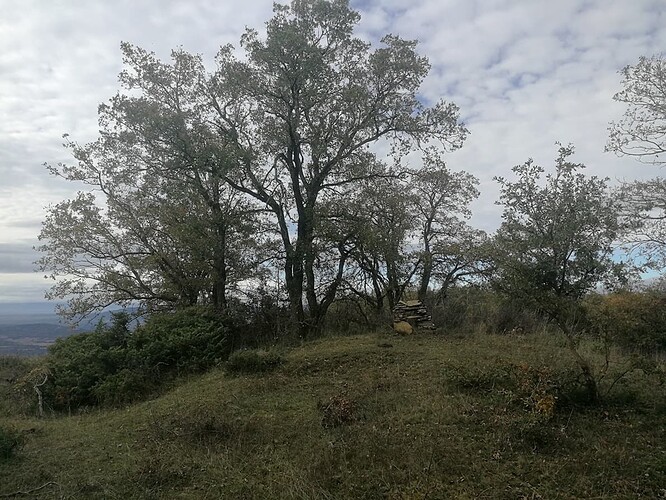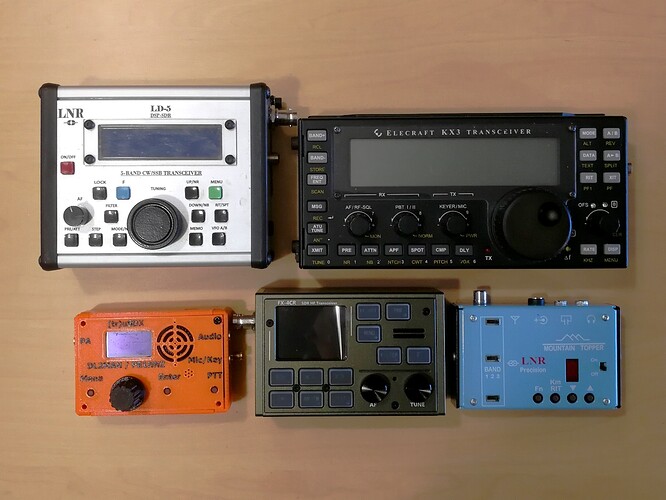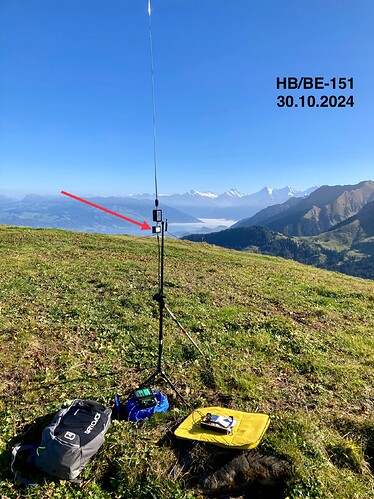Motivation
I have bought a FX-4CR transceiver from its designer and developer, Yu BG2FX, an engineer with a long time experience in building rigs since he started the design of FX-2, FX-4a and FX-9a, some of these rigs sold in the past by LNR Precission.
The rig arrived at my QTH this past week and I just run it a few times chasing some SOTA and POTA, to get familiar with it, with a good feeling.
I decided to run a first activation with it to check its function.
Activation date: Sundat November 10th 2024. Mt Iguste, EA2/NV-127
- If you’re just interested on the FX-4CR skip the first part of the thread and advance to the middle.
Driving directions
Drive by road NA-7040 and pass the village of Guirguillano.
Right after kilometer 11,6 in this road there is a turn left leaving the main road towards a dirt road. You can park a few meters ahead the deviation, right on the Alto de Guirguillano.
The climb
- Trail length: 3,1 km (one way)
- Mt. Iguste elevation: 881 m
- Elevation gain: abt. 170 m
The path starts following the dirt road for half of the track.
Then it changes to a walking path surrounding some crop fields. The trail is an easy one with gentle slopes.
The last part was a bit ugly with some muddy sections that you can’t avoid. Better to visit this summer in good weather!
The summit
This one is wide but it is obstructed in some directions with trees and bushes, having only open views in one side of the summit.
The highest point is indicated by a pile of stones and the name of the mountain.
The activation:
Once in the summit I put hands on my target today.
- Gear: FX-4CR, 3 x 21700 LiIon cells and a 20 meter long EFHW installed inverted Vee on a 5m carbon fishpole with a homebrew tuner.
I operated for 1 h 26 mins and closed my log with 77 QSO (a few on VHF), including 11 S2S.
I ran on 14, 21 and 28 MHz, both CW and SSB. I got nice reports but bear in mind the propagation is very good these days.
The FX-4CR evaluated
Bands : FX-4CR comes well equipped with all modes from 80 to 6 meters.
The rig is happy with my LiIon 3S pack. In fact the rig works well from a variety of input voltage, limiting the output power a bit, according to my measurements at home for Volt / RF Power:
-
9V: max 11 w
-
10V: max 15 w
-
12V: max 18 w
-
13V: max 20 w
-
18 V: as per specifications, not tested.
Although this is a 20 watt rig I don’t need to use such high power, so I can run 8 to 10 w with my light 3S batt on an average 2 or 3 hour activation. Anyway, it’s never bad to have a QRO option just in case.
RX current draw at 12V is 255 miliAmps, a good value that helps staying active in the field.
TX current draw at 12V 5w is 1,76 Amp and 2,21 Amp at 10 watts.
The sound is quite okay in this rig. I normally prefer using a headset for SOTA but this time I used the built in speaker. It is small but produced a decent volume and quality. Using headphones improves the sound, but I managed the activation with the speaker without any complaint.
Display : the color 2 inch TFT did well and visibility was right. Some indications are small but frequency, mode , Filter width and Signal meter were easy to read.
Controls : band and mode changes are easy and straightforward. Buttons are sensitive so a low pressure activates them. Some precaution is required not to switch them unexpectedly while using the tuning knobs.
The two press & rotate knobs allow multiple funtions, and it was very easy to control AF gain, tuning step, output power and CW key speed without requiring entering into complex menus.
Receiver : quite clear and sensitive RX, no interference from adjacent stations. Low incoming signals are easy to read. There is no Preamp but the gain (which can be settled) was right. No overloading with big signals, therefore AGC seem fine.
CW : at home I experienced some pop noise with a too small CW delay time (semi QSK), so I increased it to about 200 msec and operating CW is quite pleasant now. I had a moderate pile up and sent without errors feeling the timing of the built in electronic keyer is acqurate and stable.
SSB : I had no time to build a Mic adaptor yet for my headset. Instead, I used the stock mic, which is bulky for this tiny rig.
During the activation I increased the Mic gain setting over 20 and experienced the only issue of the day, where I had some micro cuts in the transmission and some power spikes on the S-meter bar. Some hams reported intermittent transmission then and I suspect I had some RF feedback issues there. I reduced the Mic gain to 15 and the output power a bit and the troubles dissapeared.
I’d seen such issue documented in Youtube with this rig. I will check about that carefully with my headset and maybe I’ll need to add some ferrites near the mic / antenna ports.
Temperature : the metal body is robust and thick and manages well the heat dissipation. At the middle of the activation the small built in fan was automatically engaged during some seconds. I wasn’t aware of this fan and was surprised to hear it suddenly in action. It wasn’t too noisy and didn’t disturbed me from the operation. At the end of the activation I felt the rig was warm but not very hot. I could probably seat the rig allowing more ventilation of the back next time.
Dimensions : compact but not tiny, with low height knobs, measured as 110 x 70 x 55 mm.
Weight is 482 gram without the stock microphone.
The rig pictured with some other “amigos” ( KX3, LD-5, tr(u)SDX, MTR ):
Conclusion
My overall impression is that the rig pass the activation with a good performance, both RX and TX, better than I expected for its size.
Handling the rig was quite comfortable.
My rate is positive. It is a good rig for its price and a worthwhile option to consider among the number of small rigs on the market.
This is the version three of the rig now (Oct 2024) and Yu has made a good development to overcome some issues from the past versions documented on internet.
I will investigate the settings to avoid RF feedback troubles.
73 Ignacio





















